
Saltwater fish tanks provide a vibrant slice of ocean life for aquarists seeking a challenging yet rewarding hobby. These systems replicate natural marine environments using precise controls and specialized equipment to support a diverse range of saltwater species. This article explains what sea water fish tanks are and why they are an excellent choice for dedicated hobbyists and professionals alike. It covers everything from tank types, equipment needs, and setup to ongoing maintenance and cycle management. With increasing interest in creating mini ocean ecosystems at home or in public displays, understanding the benefits and challenges of saltwater aquaria is critical. This guide will help aquarists make informed decisions that enhance their marine experience, promote healthy aquatic life, and ensure long-term success.
Transitioning from freshwater systems to the complexity of marine setups can inspire new levels of aquascaping and species diversity. The following sections explain each aspect of a saltwater aquarium – starting with definitions and benefits, then exploring how to choose the right tank, the essential equipment needed, and concluding with detailed steps for setting up and cycling a marine aquarium.
What Are Sea Water Fish Tanks and Why Choose Them?
Saltwater fish tanks, often known as marine aquariums, are specialized systems designed to mimic the natural habitats of ocean species. They use synthetic or natural sea salt mixed with water to achieve proper salinity and include substrates and live rocks that host beneficial bacteria. Distinguished by their higher salinity, complex bioload, and species diversity, these tanks offer a more challenging and visually stunning experience than freshwater setups because they require precise maintenance of parameters like pH, salinity, and temperature.
Marine aquariums present a captivating display with vibrant, exotic species that are rarely seen in typical home environments. Their biologically complex ecosystems foster abundant beneficial bacteria and support marine life ranging from colorful coral formations to delicate schooling fish. In addition, they increase an aquarist’s expertise in filtration, lighting, and maintenance techniques. Saltwater tanks are ideal for enthusiasts with experience in fish keeping, professionals in aquaculture, and those willing to invest in the necessary equipment and ongoing care. They are used in private homes, public displays, and research institutions, reflecting their versatility and appeal.
How Do You Choose the Right Saltwater Aquarium Tank?
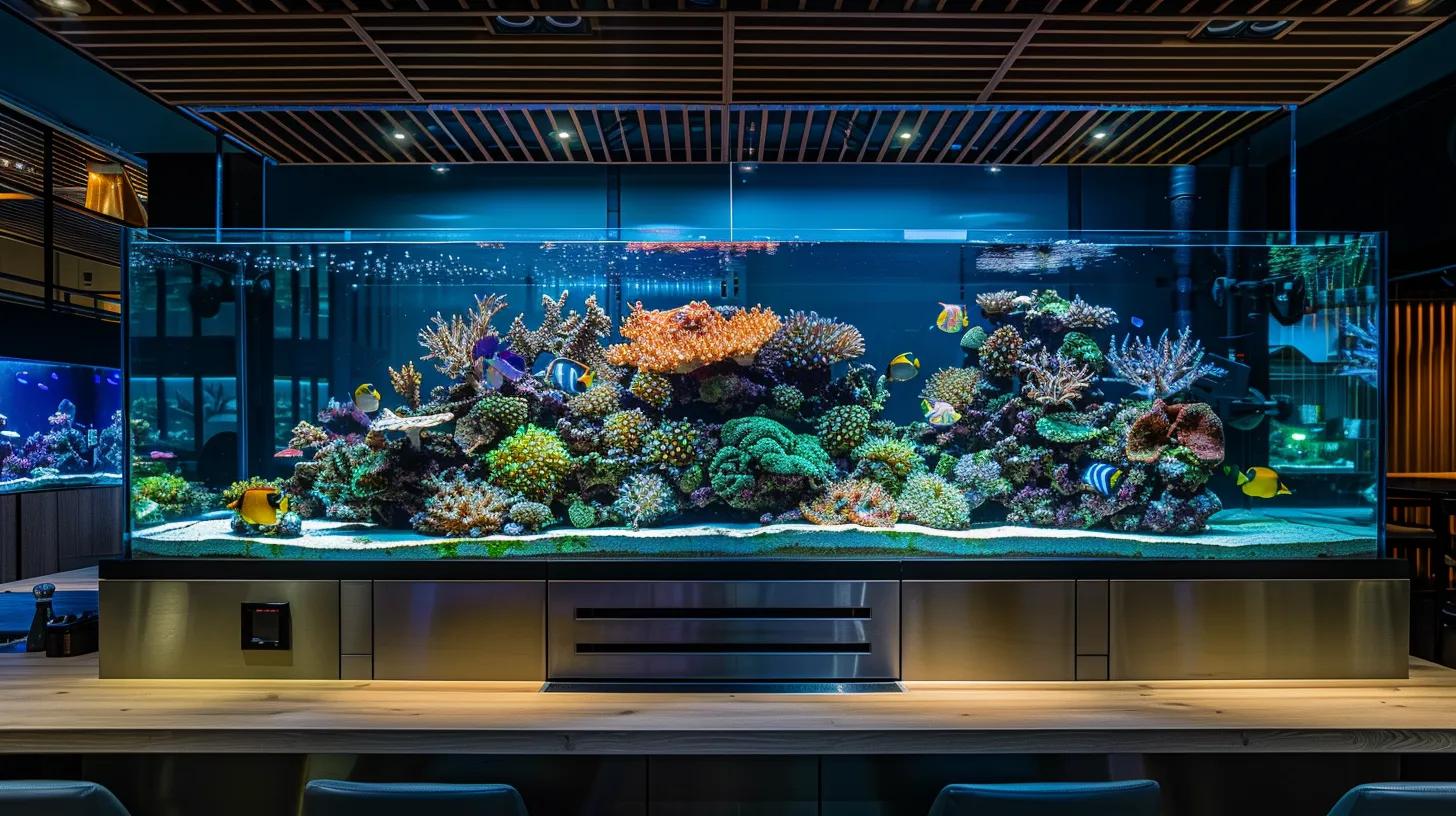
Choosing the right saltwater aquarium tank is critical for the health of your marine life and the overall success of your aquarium. The selected tank must suit your space, budget, and support the needs of the species you plan to display. A well-chosen tank ensures optimal water quality, proper lighting, and sufficient space—all contributing to a stable and visually appealing system.
What Tank Sizes Are Best for Different Aquarists?
Tank size selection depends on your experience, goals, and available space. Larger tanks are generally recommended for beginners because their greater water volume buffers against sudden changes in water chemistry. For example, a 100 gallon aquarium is prized for supporting complex ecosystems while remaining manageable with appropriate equipment. Smaller tanks can work well when managed carefully, especially in settings with limited space or for supplementary displays. Experienced aquarists may choose even larger setups for advanced aquascaping and diverse species, while smaller tanks may suffice in offices when supported by precision dosing and frequent monitoring.
How Do Tank Shapes Affect Aquarium Setup?
Tank shape significantly impacts both aesthetics and functionality. Rectangular tanks are common due to ample surface area for gas exchange and uniform lighting distribution, which benefits coral growth in reef setups. Bow-front or curved tanks offer dynamic viewing angles and a modern look; however, they may have challenges with even lighting or circulation if not carefully managed. Custom shapes such as pentagons can support creative aquascaping but require careful planning to ensure sufficient light and water flow. The geometry of the tank also influences equipment placement, with irregular shapes sometimes necessitating extra pumps or powerheads for even circulation.
What Essential Equipment Do You Need for a Sea Water Fish Tank?
The success of your marine aquarium depends largely on the quality and suitability of its equipment. Beyond the tank and water, specialized devices regulate water quality, lighting, and other environmental parameters essential for mimicking ocean conditions and maintaining marine life.
Which Filtration Systems Are Best for Saltwater Aquariums?
Effective filtration is the backbone of any saltwater aquarium. Mechanical, chemical, and biological filtration systems work together to remove waste, toxins, and excess nutrients. A canister filter or sump system is commonly recommended for comprehensive filtration. Protein skimmers play a critical role, removing organic compounds before they break down into ammonia and nitrite. Advanced setups may include refugiums or deep sand beds that enhance biological filtration and support beneficial microbial populations vital for coral health and robust fish environments.
How Does Aquarium Lighting Impact Marine Life?
Lighting is instrumental in promoting photosynthesis in corals and live rock. Quality lighting enhances the visual appeal of the tank and supports the growth of symbiotic algae (zooxanthellae) essential for coral health. LED lighting has become the standard due to its energy efficiency, customizable spectrum, and long lifespan. Correct lighting simulates natural day-night cycles, ensuring that marine life adheres to its natural circadian rhythm, promoting growth and reproduction. Insufficient or poorly directed lighting can lead to coral bleaching and unpredictable ecosystem dynamics.
Why Are Protein Skimmers Important?
Protein skimmers are vital as they remove dissolved organic compounds before they degrade into harmful ammonia. By generating foam that traps and expels these compounds, they help maintain water clarity and prevent toxin accumulation that could stress or kill delicate marine species. In reef tanks, where corals and invertebrates are particularly sensitive to water chemistry, protein skimmers are an essential component for sustaining vibrant marine life.
What Role Do Heaters, Chillers, and Pumps Play?
Temperature control is crucial in a saltwater fish tank. Heaters and chillers maintain the water within a narrow range—typically between 75°F and 80°F—to simulate tropical ocean conditions. Pumps and powerheads ensure efficient water circulation, which helps distribute heat evenly, deliver oxygen, and prevent stagnant zones where waste may accumulate. Effective water movement also assists in evenly mixing salt and water, maintaining a consistent salinity level throughout the tank and supporting a balanced, healthy marine ecosystem.
Below is a table summarizing key equipment features:
| Equipment | Primary Function | Key Benefit | Typical Price Range |
|---|---|---|---|
| Protein Skimmer | Removes organic waste | Enhances water clarity and quality | $150 – $400 |
| LED Lighting System | Simulates natural light cycles | Supports coral growth and vibrant colors | $200 – $600 |
| Canister Filter | Provides multi-stage filtration | Maintains mechanical and biological clarity | $100 – $300 |
| Heater & Chiller | Regulates water temperature | Prevents stress from temperature fluctuations | $80 – $350 |
| Powerheads | Enhances water circulation | Improves oxygenation and nutrient distribution | $50 – $150 |
How Do You Set Up and Cycle a Saltwater Aquarium?
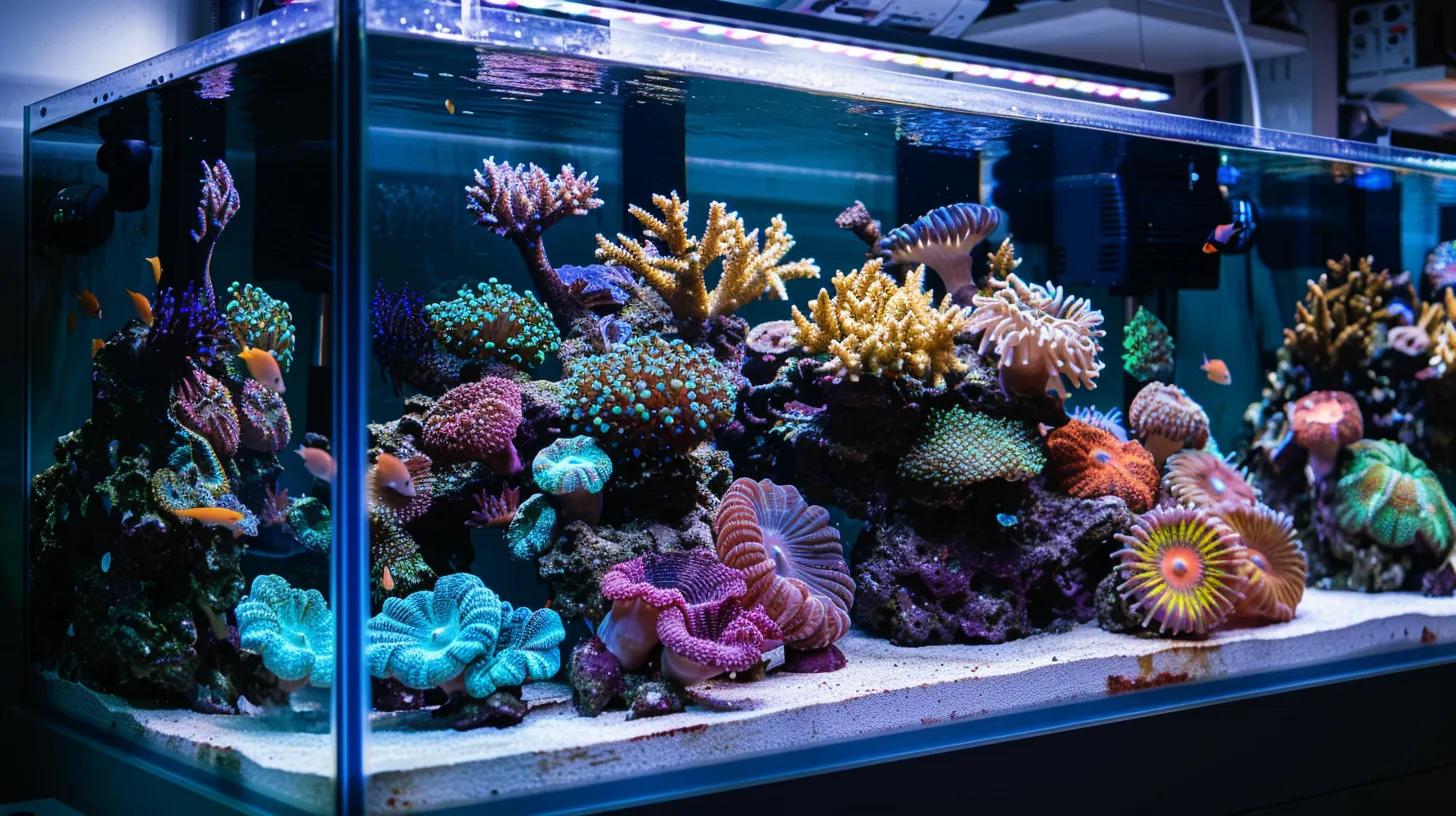
Setting up and properly cycling your saltwater aquarium is fundamental to establishing a stable marine ecosystem. This process involves assembling the necessary equipment, arranging substrates and live rock, and managing water chemistry to create conditions conducive to the growth of beneficial bacteria.
What Are the Steps to Properly Set Up Your Tank?
Begin by selecting an ideal location—away from direct sunlight and temperature fluctuations. Rinse the tank and substrates to eliminate dust and debris. Fill the tank with dechlorinated water, and gradually add marine salt to achieve the target salinity of about 1.025 specific gravity. Install essential hardware such as heaters, pumps, and filtration systems. Arrange decorative features, live rock, and sand to allow natural water circulation. Add water conditioners and bacteria supplements as part of water treatment. Once the tank is set up, introduce a source of ammonia (such as decaying food or live rock) to stimulate the growth of nitrifying bacteria. Regularly monitor water parameters with test kits to ensure ammonia is converted to nitrite and then nitrate. Cycling may take several weeks but is essential for creating a safe environment for marine life.
Final Thoughts
Saltwater fish tanks offer a unique blend of beauty and challenge, requiring careful management of water chemistry, lighting, and filtration to create a thriving marine ecosystem. From choosing the right tank size and material to mastering the essential setup and cycling process, every step contributes to replicating a natural ocean environment. With advanced equipment like protein skimmers, LED lighting, and efficient filtration systems, aquarists can enjoy vibrant displays of marine life while continually expanding their expertise. A well-maintained saltwater aquarium not only serves as a stunning visual display but also provides a long-lasting ecosystem that inspires ongoing learning and passion for marine aquaculture.
Frequently Asked Questions
Q: What defines a saltwater aquarium as different from a freshwater tank?
A: A saltwater aquarium uses sea salt to create a marine environment that supports a diverse range of species, requiring controlled parameters such as higher salinity, specific pH, and a complex bioload. These systems rely on specialized equipment, live rock, and substrates to replicate ocean conditions.
Q: Can beginners successfully maintain a saltwater fish tank?
A: Although saltwater tanks are more complex than freshwater systems, beginners can succeed with thorough research, quality equipment, and a willingness to learn about water chemistry and cycling. Starting with a larger tank, like a 100 gallon aquarium, helps buffer against parameter fluctuations.
Q: Do glass or acrylic tanks offer significant advantages for marine setups?
A: Both materials have advantages. Glass is scratch-resistant, cost-effective, and offers excellent clarity, while acrylic is lighter, allows for creative designs, and has superior insulation. The choice depends on personal design preferences and budget.
Q: How long does the cycling process take for a new saltwater aquarium?
A: The cycling process typically takes 4 to 8 weeks, allowing ammonia-oxidizing and nitrite-oxidizing bacteria to develop and reduce ammonia and nitrite to safe levels before introducing sensitive marine life.
Q: What is the role of protein skimmers in marine aquariums?
A: Protein skimmers remove dissolved organic compounds before they break down into harmful ammonia, helping maintain water clarity and preventing toxic buildup—essential for the health of sensitive coral and invertebrates.
Q: How should water parameters be adjusted when setting up a saltwater tank?
A: Use high-quality RO/DI water, mix marine salt to achieve about 1.025 SG, and ensure the pH is between 8.0 and 8.4. Additionally, maintain the temperature (75°F to 80°F) and alkalinity (8 to 12 dKH) with regular testing and monitoring.
Q: What are the essential maintenance steps to ensure long-term success in a marine aquarium?
A: Regular water changes, consistent monitoring and adjustment of water parameters, routine cleaning of equipment, and maintaining robust biological filtration are key to sustaining a balanced environment. Regular testing for salinity, pH, nitrate, and alkalinity helps ensure long-term stability.



 Aquariums & Supplies
Aquariums & Supplies
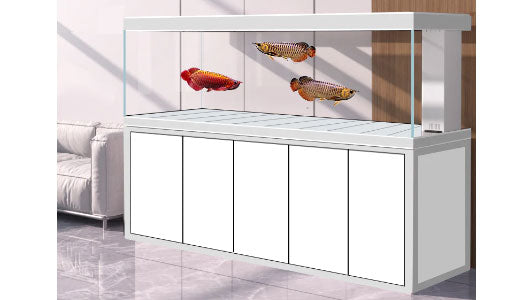

 Coral Reef Aquariums & Supplies
Coral Reef Aquariums & Supplies
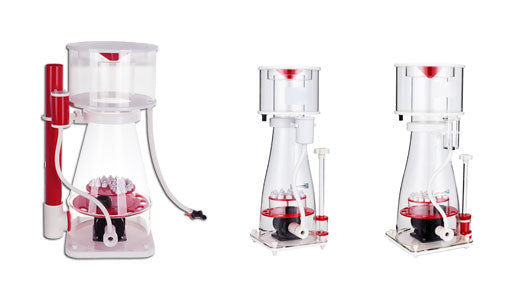

 Garden & Hydroponics & Landscape
Garden & Hydroponics & Landscape
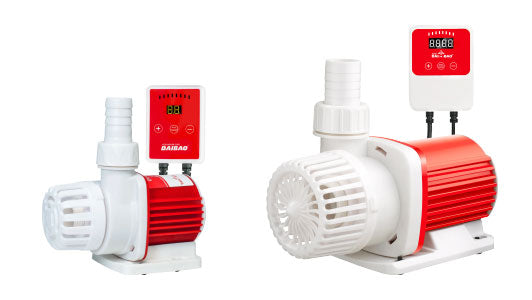

 Ponds & Fountains & Waterfalls
Ponds & Fountains & Waterfalls
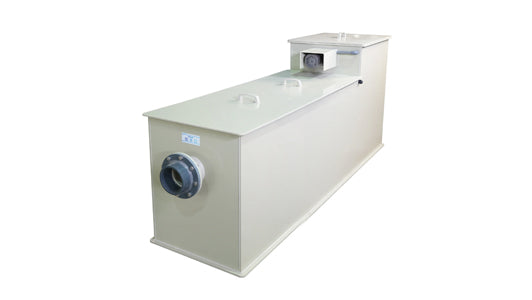

 Drum Pond Filter
Drum Pond Filter
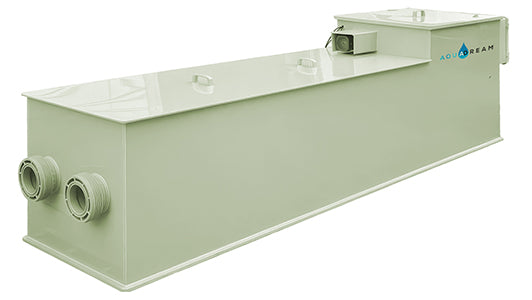
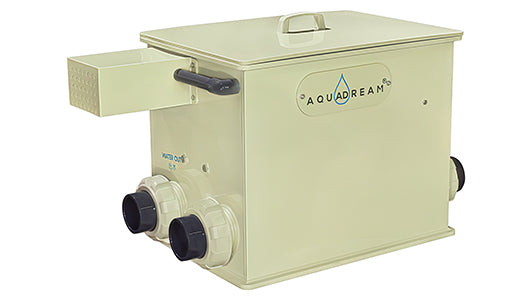

 Community
Community
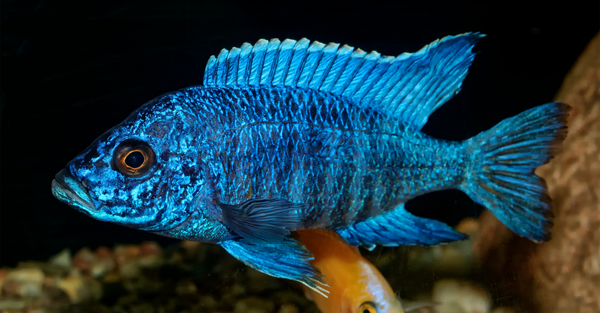
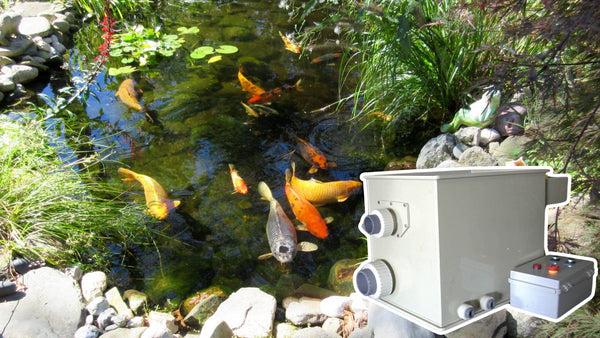

 Help Center
Help Center




.png)




